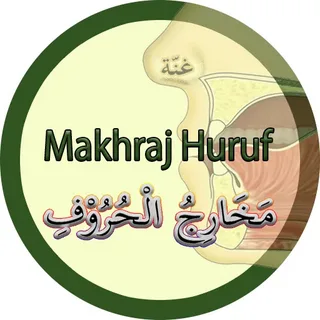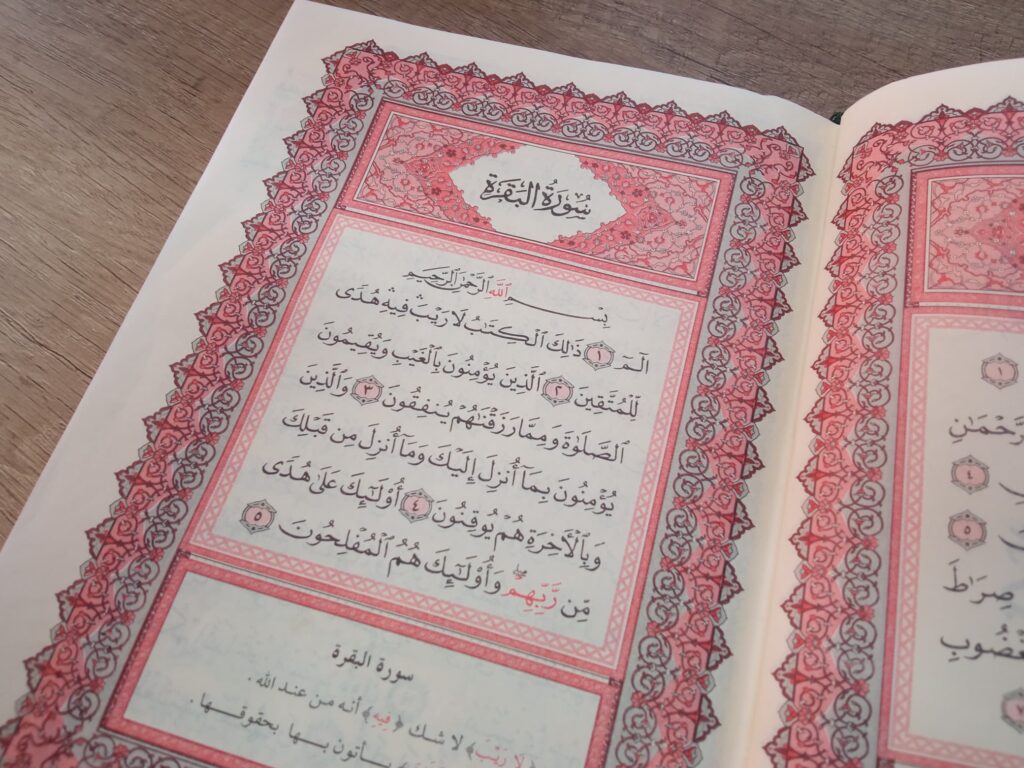Makhraj Huruf, or the articulation points of Arabic letters, is a fundamental concept in the study of the Arabic language, particularly in Tajweed—the science and rules of Qur’anic recitation. Understanding Makhraj Huruf is essential not only for correct pronunciation but also for preserving the linguistic and spiritual integrity of the Qur’an. This detailed guide explores the nature of Makhraj Huruf, their classifications, significance, and application in Arabic speech and Qur’anic recitation.
What is Makhraj Huruf?
Makhraj (plural: Makhārij) literally means “exit” or “point of emission.” Huruf means “letters.” Makhraj Huruf, therefore, refers to the specific points or places in the vocal tract where Arabic consonants are articulated or pronounced. Each Arabic letter is produced by releasing breath and sound from a distinct point in the mouth, throat, or nasal passage, and each point is responsible for different phonetic qualities.
Correct knowledge and application of Makhraj Huruf ensure clear and accurate speech, vital for effective communication and especially important in Tajweed to maintain the sanctity and proper expression of the Qur’an.
Importance of Makhraj Huruf

The significance of Makhraj Huruf can be summarized as follows:
-
Accuracy in Pronunciation: Mispronouncing letters can change meanings, leading to misunderstandings. In the Qur’an, correct pronunciation is mandatory to preserve meaning.
-
Enhancing Tajweed: Tajweed rules depend heavily on correct articulation, including knowing the exact Makhraj of each letter.
-
Preservation of the Qur’an: The oral transmission of the Qur’an relies on precise pronunciation; Makhraj Huruf knowledge helps maintain this legacy.
-
Improved Communication: Beyond religious context, accurate articulation refines Arabic language fluency.
Classification of Makhraj Huruf
Makhraj Huruf is traditionally divided into three main categories based on the area of articulation:
-
الخَيشُومِيَّة (Nasal)
-
الحَلقِيَّة (Throat)
-
اللِسَانِيَّة (Tongue-based)
Additionally, some letters are articulated from the lips or other places. Below is a detailed breakdown.
1. Throat (الحَلق)
The throat is divided into three main صفات (sections) or Makhārij:
-
Deep Throat (farther back): Letters from this point include خ (khaa) and ح (haa).
-
Middle Throat: Letters are ع (ayn) and غ (ghayn).
-
Near Throat (near the mouth): Letters are هـ (haa) and ء (hamza).
These letters require precise throat control to distinguish harsh, soft, and breathy sounds.
2. Tongue (اللسان)
The largest group is articulated using different parts of the tongue:
-
Tip of the Tongue (near front): Letters such as ت (taa), د (daal), ط (taa).
-
Edge of the Tongue: Letters like ض (daad).
-
Middle of the Tongue: Letters like ج (jeem), ش (sheen), ي (yaa).
-
Base of the Tongue: Letters like ق (qaaf) and ك (kaaf).
Each particular tongue position shapes the letter’s unique sound.
3. Lips (الشفتان)
Some letters derive their sound from the lips:
-
Both lips: ب (baa), م (meem), and و (waw).
- One lip and the teeth: ف (faa), formed by the lower lip and upper teeth.
4. Other Makhraj Points
- Nasal Passages: Although not considered a primary Makhraj, nasalization impacts some letters during nasal sound articulation (غنة).
Detailed Makhraj Huruf of Arabic Letters
To clarify the articulation points, here is a simplified classification of Arabic letters by their Makhraj:
| Makhraj Area | Letters | Description |
|---|---|---|
| Deep Throat | خ (khaa), ح (haa) | Produced from the deepest part of the throat |
| Middle Throat | ع (ayn), غ (ghayn) | Middle of the throat, giving guttural sounds |
| Near Throat | هـ (haa), ء (hamza) | Close to the mouth in the throat, sharp and breathy sounds |
| Tongue Tip | ت (taa), د (daal), ط (taa) | Tip articulates with upper front teeth or alveolar ridge |
| Tongue Edge | ض (daad) | Sides of the tongue against the molars |
| Tongue Middle | ج (jeem), ش (sheen), ي (yaa) | Central part of the tongue touches the roof of the mouth |
| Tongue Base | ق (qaaf), ك (kaaf) | Back part of the tongue presses against the soft palate |
| Both Lips | ب (baa), م (meem), و (waw) | Both lips come together |
| Lower Lip & Upper Teeth | ف (faa) | Lower lip touches upper teeth |
-
The letter ق (qaaf) requires the tongue to touch the soft palate back in the mouth.
-
ض (daad) is called the “heavy letter” because it is pronounced with the side of the tongue touching the molars.
-
Letters like ح (haa) are breathy and produced with partial closure, giving unique sounds.
Relationship of Makhraj Huruf to Tajweed

Tajweed is deeply linked with Makhraj Huruf because the rules of Tajweed depend on knowing exactly where and how each letter is articulated. Tajweed guides how to pronounce each letter with the correct attributes (صفات), length, and characteristics to ensure the Qur’an is recited as revealed.
Mistakes in Makhraj can break Tajweed rules, resulting in incorrect recitation, which could alter meaning. For example:
-
Mispronouncing غ (ghayn) as ع (ayn) changes the letter and sound.
-
Incorrect articulation of ق (qaaf) can resemble ك (kaaf) and distort the word.
Learning and Mastering Makhraj Huruf
Mastery of Makhraj Huruf usually requires:
-
Direct Instruction: A qualified teacher demonstrates each articulation point.
-
Practice with Audio Samples: Listening and repeating helps develop ear and muscle memory.
-
Visual Aids: Diagrams showing tongue and lip positioning aid learning.
-
Consistent Practice: Repetitive practice is essential for flawless performance.
-
Use of Technology: Apps and online tools now accompany traditional learning for both Tajweed and Arabic phonetics.
Challenges Learners Face
Many learners struggle with the following:
-
Distinguishing letters close in sound, such as ص (Saad) vs. س (Seen).
-
Producing letters from deep throat areas unfamiliar to non-native speakers.
-
Learning letter heavy or emphatic sounds, which need unique tongue or throat actions.
-
Maintaining consistency throughout natural speech or Qur’an recitation.
These challenges highlight why Makhraj Huruf study is crucial for both beginners and advanced learners, especially for Qur’anic reciters.
FAQs
What is the best way to learn Makhraj Huruf?
The best approach combines direct instruction from a qualified teacher, consistent listening and repetition, visual aids like diagrams, and regular practice.
Are Makhraj Huruf the same in all Arabic dialects?
Makhraj Huruf refer to classical Arabic pronunciation points, mainly used in Qur'anic recitation and Modern Standard Arabic. Dialects may vary in pronunciation but still stem from these basic points.
Can non-native speakers master Makhraj Huruf?
Yes, with dedication, guidance, and practice, non-native speakers can master it, especially with modern resources and qualified teachers available.
How does Makhraj Huruf affect Tajweed?
Proper Tajweed requires correct articulation of letters at their Makhraj to preserve meaning, rhythm, and beauty in Qur'anic recitation.
What happens if you mispronounce a letter in the Qur'an?
Mispronunciations can change meanings or invalidate a recitation depending on the nature of the mistake, which is why correct Makhraj and Tajweed are emphasized.
Conclusion
Makhraj Huruf forms the foundation of accurate Arabic pronunciation and the essential art of Tajweed. By precisely understanding and applying the correct points of articulation, learners ensure the linguistic integrity of spoken Arabic and the sacred recitation of the Qur’an. Mastery of Makhraj Huruf is indispensable for anyone serious about Arabic linguistics, Qur’an memorization, or professional recitation. Through dedicated study, guided practice, and attention to detail, the learner can achieve clear, accurate, and beautiful pronunciation, enhancing comprehension and reverence for the language.

